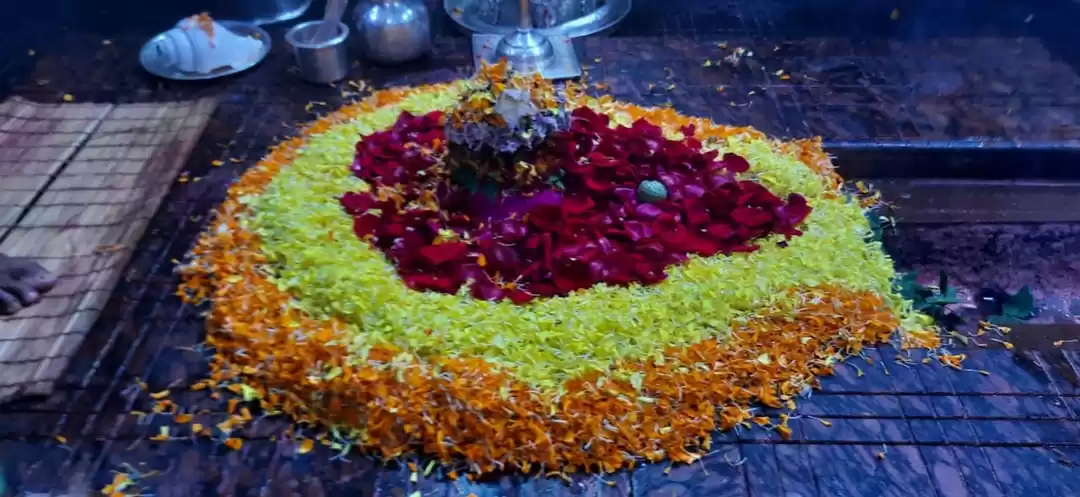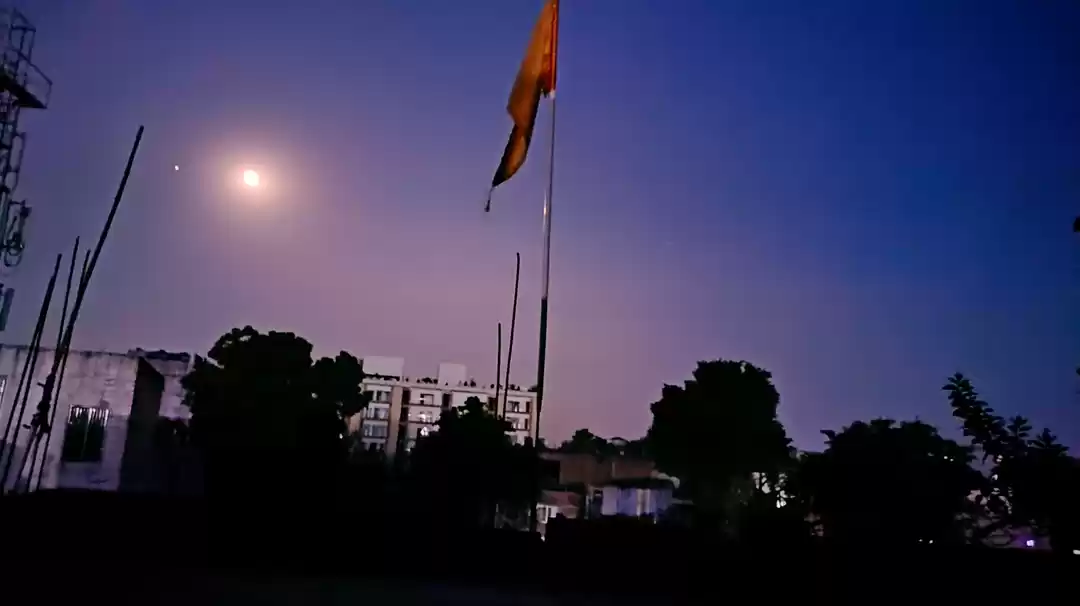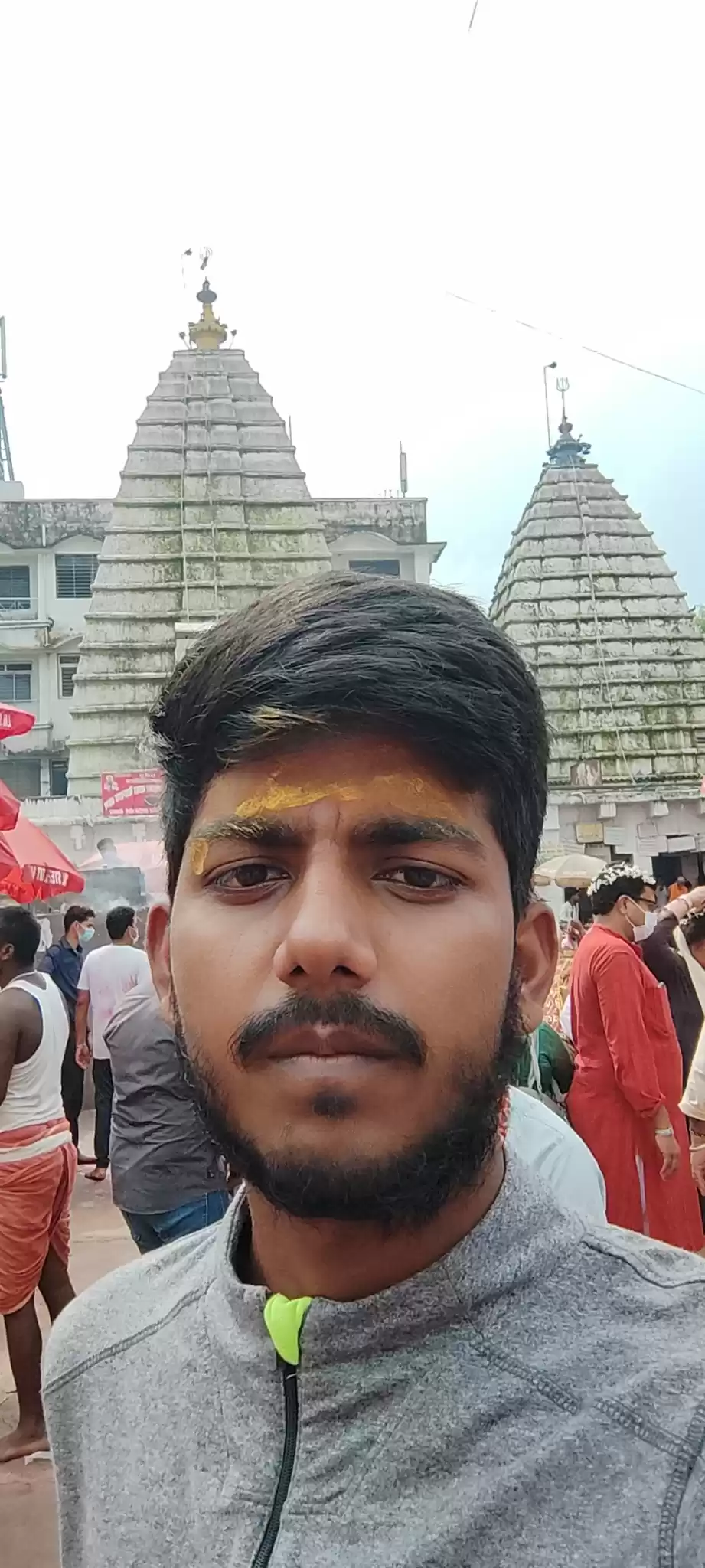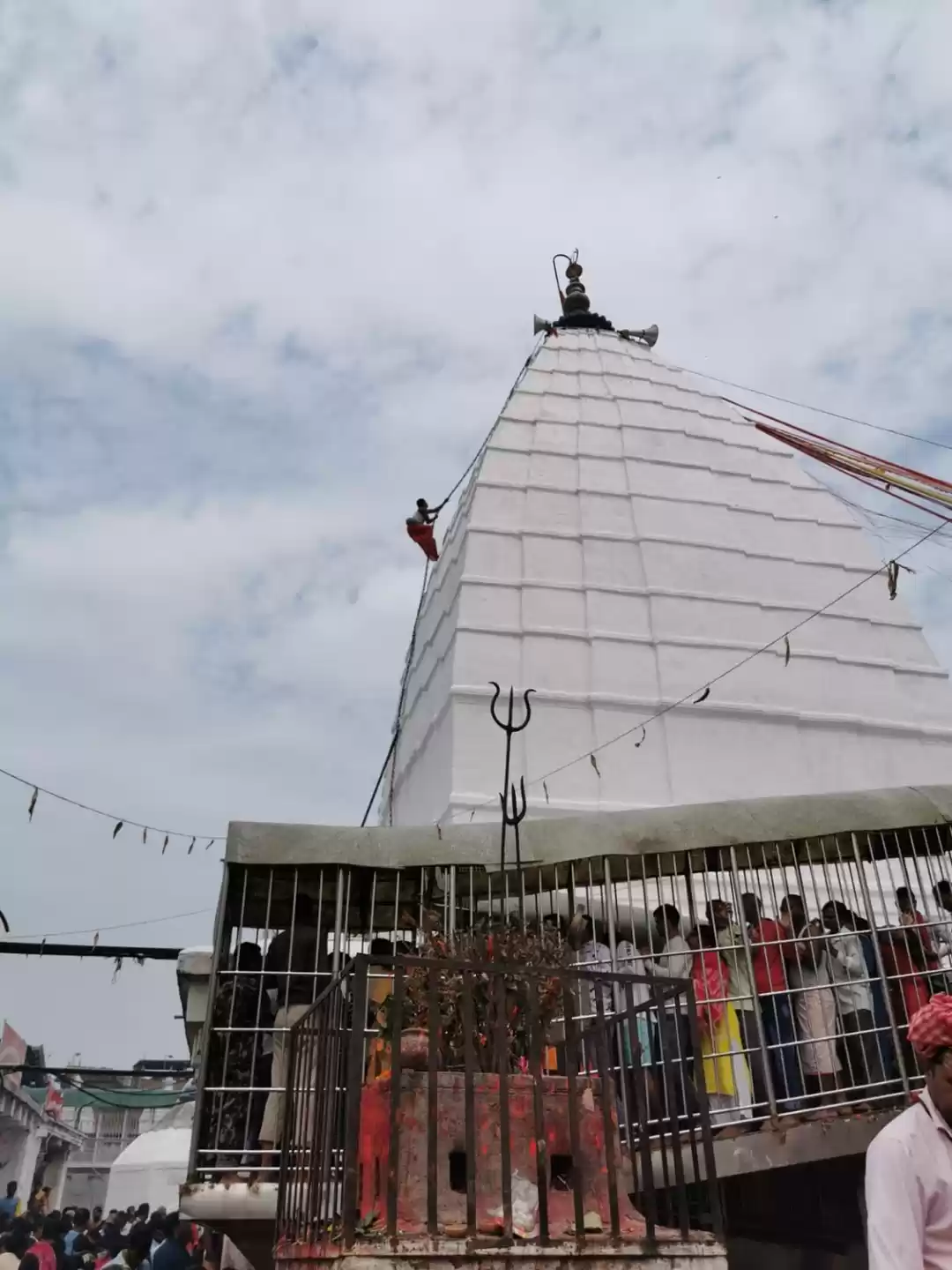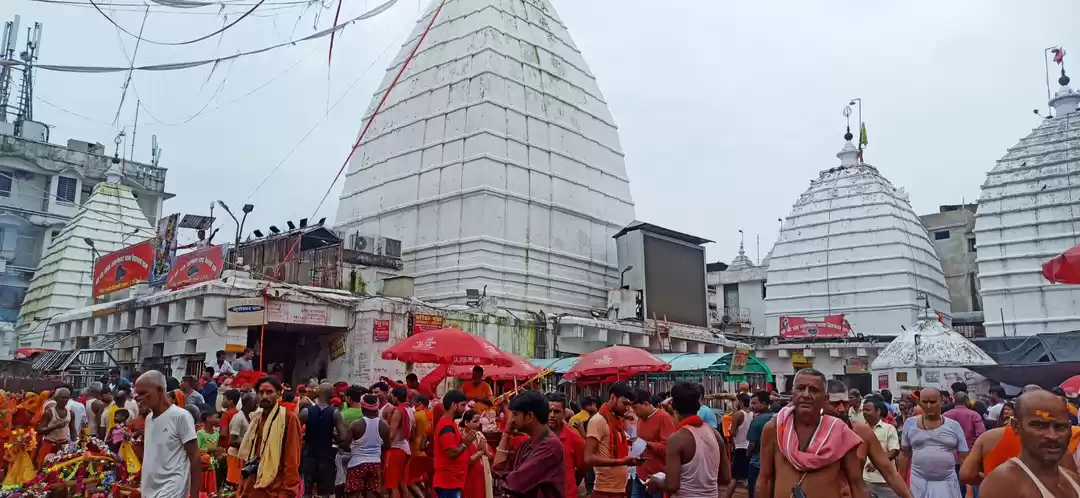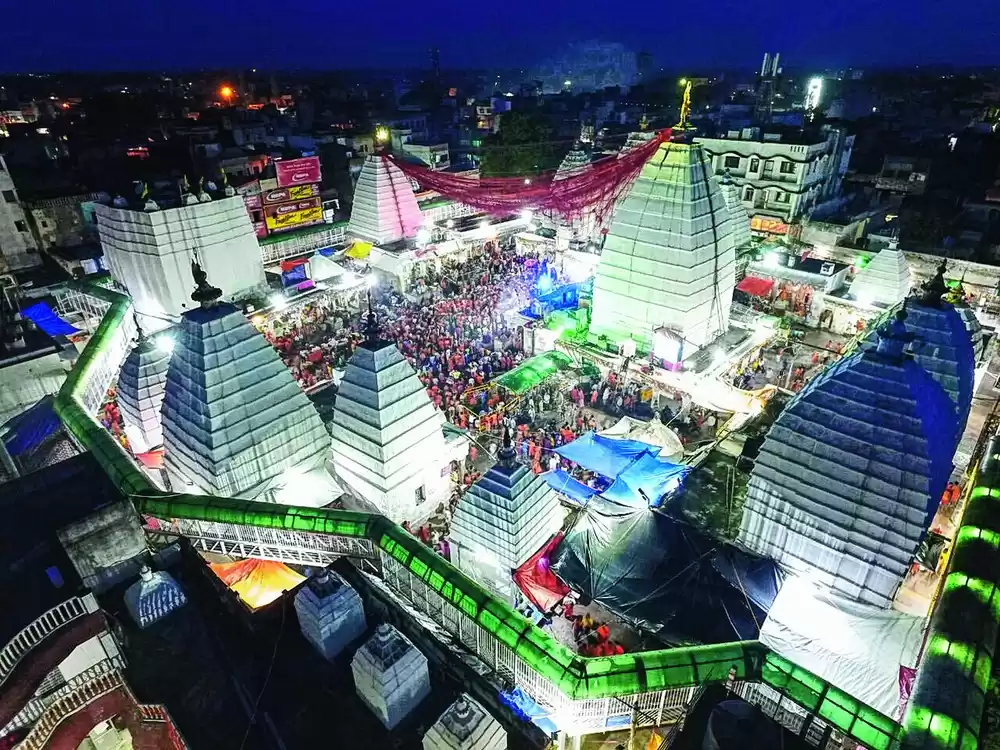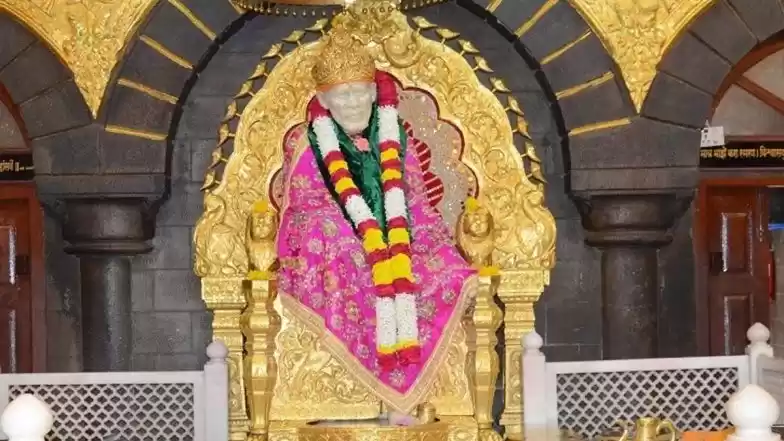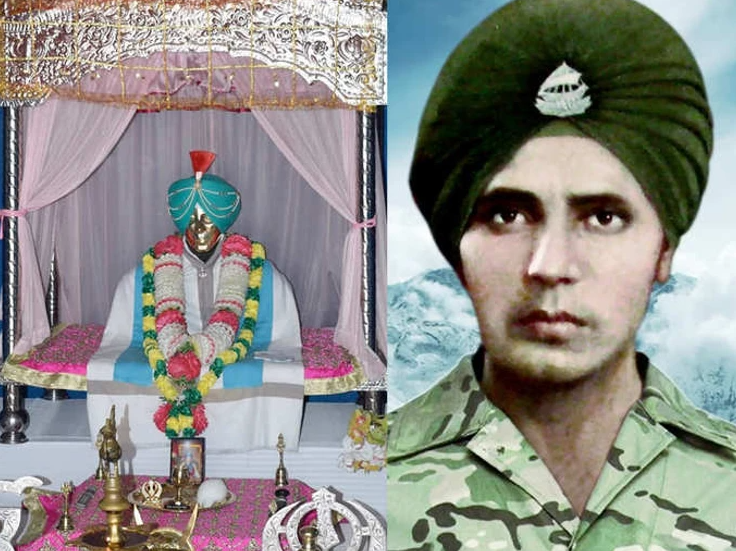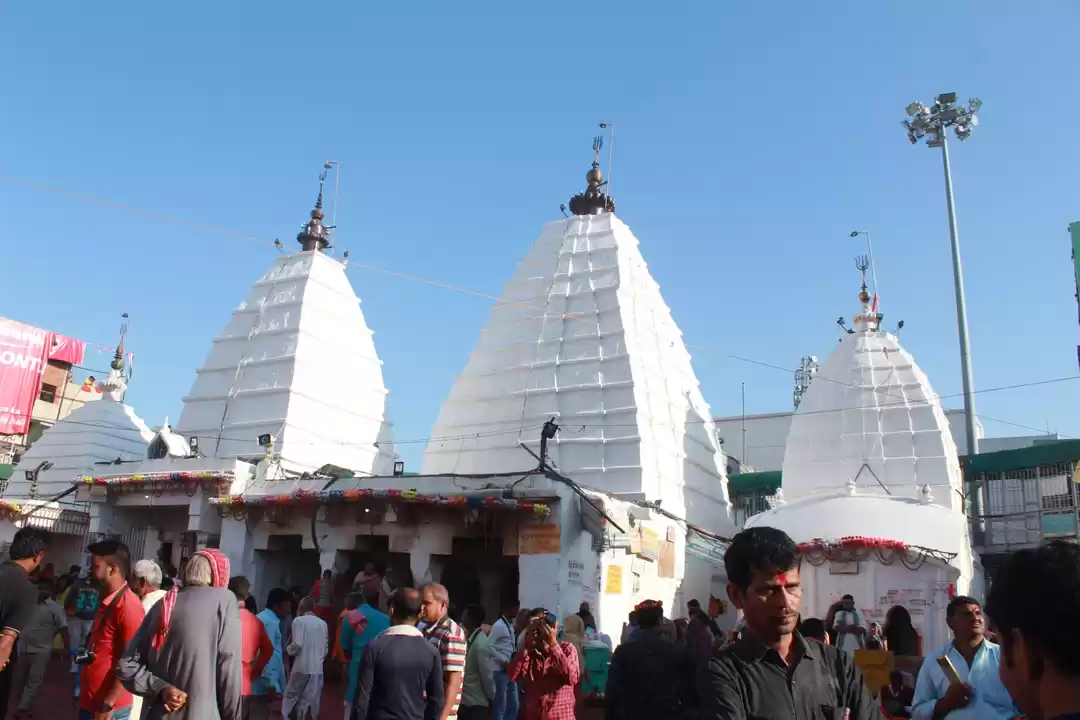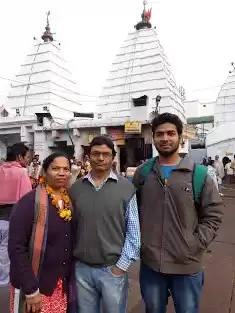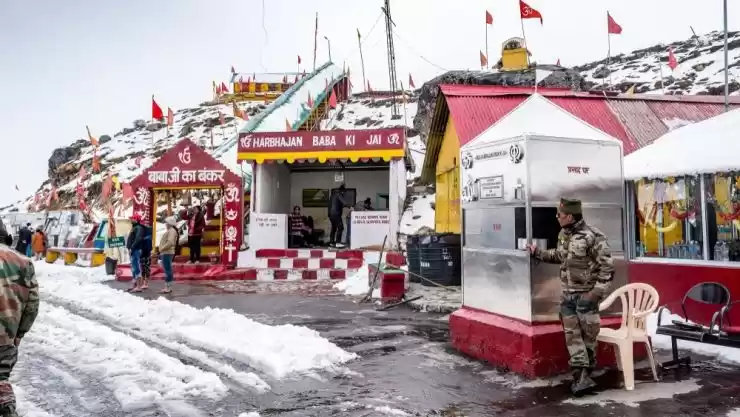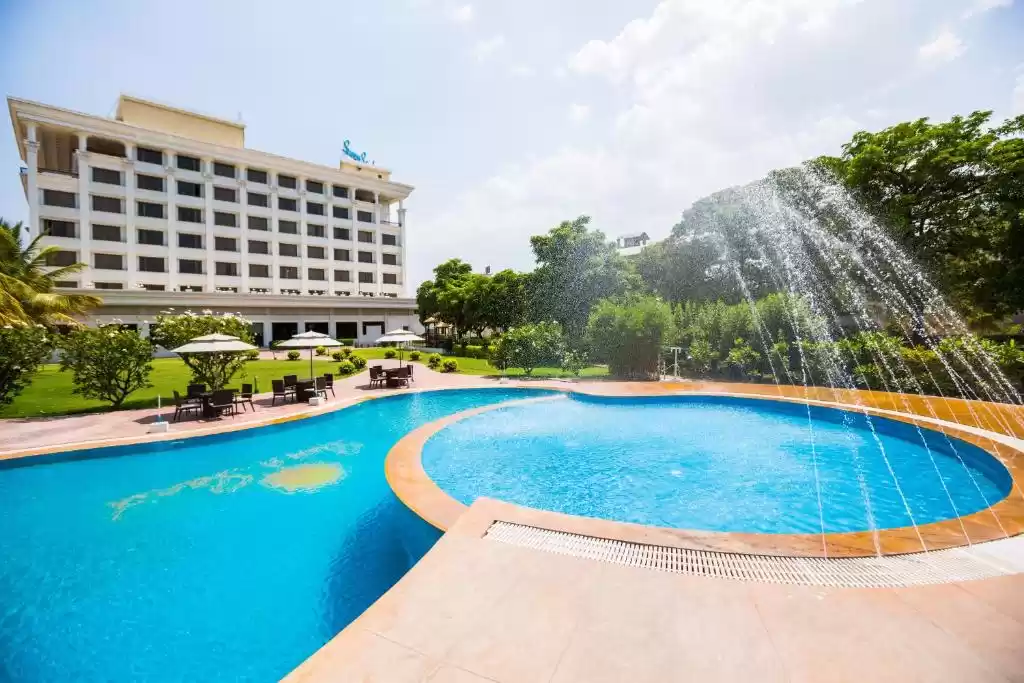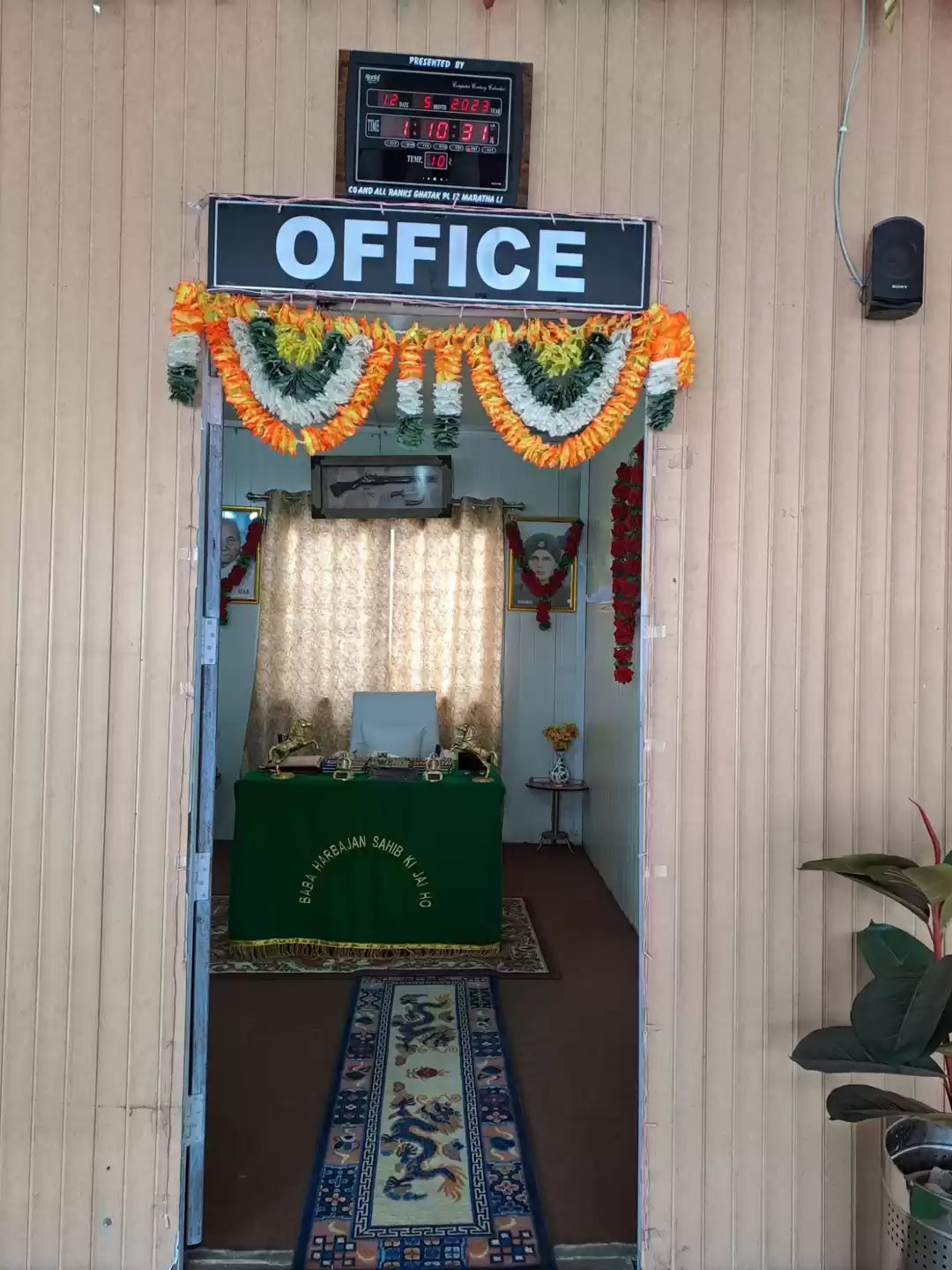Are you looking for a spiritual and cultural experience that will enrich your soul and inspire your mind? If yes, then you should visit the Baidyanath Temple in Deoghar, Jharkhand, India. This ancient temple is one of the 12 Jyotirlingas of Lord Shiva and one of the 51 Shakti Peethas of Goddess Parvati.
It is also a popular pilgrimage destination for millions of devotees who flock to the temple every year, especially during the Shravan Mela festival. In this article, we will tell you everything you need to know about the Baidyanath Temple, its history, legend, significance, architecture, timings, poojas, festivals, and how to reach it.
We will also give you some tips on where to stay, eat, and explore near the temple. So, read on and discover the divine journey to the sacred Jyotirlinga in Deoghar.
History and Legend of Baidyanath Temple
The Baidyanath Temple has a rich and fascinating history that dates back to thousands of years. According to legend, the temple was built by Ravana, the king of Lanka and the antagonist of Ramayana. Ravana was a great devotee of Lord Shiva and wanted to obtain his blessings.
He performed a severe penance at Mount Kailash, the abode of Shiva, and asked for a boon. Shiva was pleased with his devotion and offered him a lingam (a symbol of Shiva) that contained his power and presence. He also warned him not to place the lingam anywhere else or it would get fixed there.

Ravana was overjoyed and carried the lingam with him towards Lanka. However, on his way, he felt an urge to relieve himself and asked a cowherd boy named Ganesha (who was actually Lord Ganesha in disguise) to hold the lingam for him. Ganesha agreed but placed the lingam on the ground as soon as Ravana left. When Ravana returned, he tried to lift the lingam but it did not budge. He realized that he had been tricked by Ganesha and Shiva and became furious. He tried to uproot the lingam with force but only managed to break some pieces from it. These pieces fell at different places and became other Jyotirlingas.
The place where the main lingam remained became known as Baidyanath Dham or Baba Baidyanath Dham. The word Baidyanath means “the lord of physicians” and refers to Shiva’s healing powers. It is believed that Ravana’s act of worship made the lingam a source of health and happiness for anyone who visits it.
The Baidyanath Temple is also one of the 51 Shakti Peethas of Goddess Parvati. According to another legend, Parvati’s father Daksha organized a grand yagna (fire sacrifice) but did not invite her husband Shiva. Parvati felt insulted and decided to attend the yagna anyway. However, when she reached there, she saw that Daksha was disrespecting Shiva and his followers. She could not bear this humiliation and jumped into the fire. Shiva was enraged by this tragedy and carried Parvati’s body on his shoulder and started performing the tandava (dance of destruction). To calm him down and save the world from his wrath, Lord Vishnu cut Parvati’s body into 51 pieces with his Sudarshana Chakra (discus weapon). These pieces fell at different places and became Shakti Peethas or seats of power of Parvati.
The place where Parvati’s heart fell became known as Jai Durga Temple or Jai Parvati Temple. It is located near the Baidyanath Temple and is dedicated to Parvati’s manifestation as Durga or Jai Durga (the victorious goddess). It is believed that Parvati’s heart symbolizes her love and devotion for Shiva and anyone who worships her here will attain her blessings.
The Baidyanath Temple is also mentioned in various scriptures such as Puranas, Vedas, Mahabharata, Ramayana, etc. It is considered as one of the most sacred places for Hindus and has been visited by many saints, sages, kings, and pilgrims over the centuries. The temple has also been renovated and expanded by different dynasties such as Palas, Senas, Mauryas, Mughals, and British. The current structure of the temple dates back to the 15th century CE and reflects a mix of different architectural styles and influences.
Architecture and Deities of Baidyanath Temple Complex
The Baidyanath Temple complex is spread over an area of 12 acres and consists of 22 temples dedicated to various deities. The main temple is the Baidyanath Jyotirlinga Temple, which houses the lingam of Shiva. The temple is built of stone and has a pyramidal tower that rises to a height of 72 feet. The temple has a simple and elegant design, with a spacious hall, a sanctum, and a vestibule. The lingam is placed inside a silver canopy and is adorned with flowers, sandalwood paste, and vermilion. The lingam is also surrounded by eight smaller lingams that represent the eight forms of Shiva.

The other temples in the complex are dedicated to different deities such as Parvati, Ganesh, Hanuman, Kal Bhairav, Nandi, Surya, etc. Some of the notable temples are:
Parvati Temple:
This temple is located next to the main temple and is dedicated to Parvati, the consort of Shiva. The temple has a beautiful idol of Parvati in her manifestation as Jai Durga or Jai Parvati. The idol is made of black stone and has eight arms, holding various weapons and symbols. The temple is also decorated with paintings and sculptures depicting the stories of Parvati and Shiva.
Ganesh Temple:
This temple is located near the entrance of the complex and is dedicated to Ganesh, the elephant-headed son of Parvati and Shiva. The temple has a large idol of Ganesh in his manifestation as Siddhi Vinayak or the remover of obstacles. The idol is made of white marble and has four arms, holding a lotus, an axe, a modak (sweet), and a rosary. The temple is also adorned with colorful flags and bells.
Hanuman Temple:
This temple is located opposite to the main temple and is dedicated to Hanuman, the monkey-god and the devotee of Rama. The temple has a huge idol of Hanuman in his manifestation as Panchmukhi or the five-faced. The idol is made of brass and has five faces, representing Hanuman, Narasimha, Garuda, Varaha, and Hayagriva. The idol also has ten arms, holding various weapons and symbols. The temple is also embellished with paintings and carvings depicting the scenes from Ramayana.
Kal Bhairav Temple:
This temple is located behind the main temple and is dedicated to Kal Bhairav, the fierce form of Shiva. The temple has a small idol of Kal Bhairav in his manifestation as Kshetrapal or the guardian of the place. The idol is made of black stone and has three eyes, four arms, holding a trident, a skull, a drum, and a noose. The idol also has a dog as his mount. The temple is also decorated with skulls and bones to symbolize his power over death.
The Baidyanath Temple complex also has four sacred ponds that are associated with different legends and rituals. These are:
Sivaganga:
This pond is located near the main temple and is believed to have been created by Shiva himself. It is said that when Ravana tried to uproot the lingam from the ground, he caused a crack in it from which water started flowing out. This water formed the pond and was named Sivaganga or Shiva’s Ganga. It is considered as holy as the river Ganga and devotees take a dip in it before entering the temple.
Brahmakund:
This pond is located near the Parvati Temple and is believed to have been created by Brahma, the creator god. It is said that when Parvati’s heart fell at this place, Brahma performed a yagna (fire sacrifice) to pacify Shiva. He also created a pond from his kamandalu (water pot) and named it Brahmakund or Brahma’s pond. It is considered as auspicious as the river Saraswati and devotees offer water to their ancestors here.
Chandrakund:
This pond is located near the Ganesh Temple and is believed to have been created by Chandra, the moon god. It is said that when Chandra was cursed by Daksha for favoring Rohini over his other wives, he came to this place and worshipped Shiva. Shiva was pleased with him and reduced his curse by half. He also created a pond from his crescent moon and named it Chandrakund or Chandra’s pond. It is considered as sacred as the river Yamuna and devotees bathe in it during full moon nights.
Ramkund:
This pond is located near the Hanuman Temple and is believed to have been created by Rama, the hero of Ramayana. It is said that when Rama was exiled to the forest with his wife Sita and brother Lakshmana, he came to this place and worshipped Shiva. Shiva was impressed by his devotion and granted him a boon. He also created a pond from his bow and arrow and named it Ramkund or Rama’s pond. It is considered as holy as the river Godavari and devotees immerse the ashes of their deceased relatives here.
Why You Should Take a Roadtrip from Kolkata to Baidyanath Dham This Season: The Benefits of Visiting the Sacred Jyotirlinga
Timings and Poojas of Baidyanath Temple
The Baidyanath Temple is open for darshan (viewing) and pooja (worship) from 4:00 AM to 9:00 PM every day. However, the timings may vary depending on the season and the festivals. The temple follows a daily schedule of rituals and ceremonies that are performed by the priests. The schedule is as follows:

Mangala Aarti:
This is the first aarti (ritual offering of light) of the day that takes place at 4:00 AM. The priests wake up Shiva and Parvati with chants and prayers and offer them milk, water, flowers, and incense.
Shodashopachara:
This is the main worship service of the day that takes place at 6:00 AM. The priests perform 16 types of offerings to Shiva and Parvati, such as bathing, dressing, adorning, feeding, etc.
Bhog Aarti:
This is the second aarti of the day that takes place at 12:00 PM. The priests offer food to Shiva and Parvati and distribute it as prasad (sacred food) to the devotees.
Sandhya Aarti:
This is the third aarti of the day that takes place at 6:00 PM. The priests offer lamps, camphor, and fire to Shiva and Parvati and sing hymns and songs in their praise.
Shayan Aarti:
This is the fourth and final aarti of the day that takes place at 9:00 PM. The priests put Shiva and Parvati to sleep with chants and prayers and close the temple gates.
The Baidyanath Temple also offers various types of poojas and rituals that can be performed by the devotees for their wishes and well-being. Some of the popular poojas are:
Rudrabhishekam: This is a special pooja that involves pouring water mixed with milk, honey, ghee, curd, etc. on the lingam while reciting the Rudram (a Vedic hymn dedicated to Shiva). This pooja is said to bestow blessings, prosperity, health, and happiness on the devotees.
Laghurudra Abhishekam: This is a more elaborate version of Rudrabhishekam that involves chanting the Rudram 11 times along with other mantras (sacred sounds). This pooja is said to remove obstacles, sins, diseases, and troubles from the devotees’ lives.
Mahamrityunjaya Mantra Jaapam: This is a powerful pooja that involves chanting the Mahamrityunjaya Mantra (a Vedic mantra that invokes Shiva as the conqueror of death) 108 times or more. This pooja is said to grant longevity, protection, healing, and liberation from the cycle of birth and death.
The devotees can book these poojas online or offline by paying a nominal fee. The poojas can be performed on behalf of oneself or someone else. The devotees can also participate in the poojas by offering flowers, fruits, sweets, etc. to Shiva and Parvati.
Festivals Celebrated at Baidyanath Temple
The Baidyanath Temple celebrates many festivals throughout the year that attract thousands of devotees from all over India and abroad. Some of the major festivals are:

Shravan Mela:
This is the most popular festival at the temple that takes place during the month of Shravan (July-August) according to the Hindu calendar. During this festival, millions of devotees carry water from the river Ganga in pots or kanwars (bamboo poles) on their shoulders and walk for hundreds of kilometers to offer it to Shiva at Baidyanath Dham. This ritual is known as kanwar yatra or bol bam yatra and is considered as an act of devotion and penance. The devotees also wear saffron clothes, chant “Bol Bam” (say Shiva’s name), and observe fasts during this festival.
Basant Panchami:
This festival marks the arrival of spring and the worship of Saraswati, the goddess of learning and arts. It takes place on the fifth day of the month of Magh (January-February) according to the Hindu calendar. During this festival, the devotees offer yellow flowers, clothes, and sweets to Saraswati at the Jai Durga Temple and pray for wisdom, creativity, and success. The devotees also wear yellow clothes, fly kites, and enjoy music and dance during this festival.
Shivaratri:
This festival celebrates the marriage of Shiva and Parvati and takes place on the 14th night of the month of Phalguna (February-March) according to the Hindu calendar. During this festival, the devotees observe a night-long fast and vigil at the Baidyanath Temple and offer milk, water, bel leaves, etc. to Shiva. The devotees also chant “Om Namah Shivaya” (I bow to Shiva) and listen to the stories of Shiva and Parvati during this festival.
Travel & Accommodation Options Near Baidyanath Temple
The Baidyanath Temple is well-connected by road, rail, and air from various cities in India. The nearest airport is Patna Airport, which is about 260 km away from Deoghar.
The nearest railway station is Jasidih Junction, which is about 7 km away from Deoghar. The nearest bus stand is Deoghar Bus Stand, which is about 2 km away from the temple. You can also hire a taxi, auto-rickshaw, or cycle-rickshaw to reach the temple from any of these places.
There are many hotels near the Baidyanath Temple that offer comfortable and affordable accommodation for the devotees. Some of the recommended hotels are:
Hotel Rajkamal:
This hotel is located at a distance of about 1 km from the temple and offers rooms with AC, TV, Wi-Fi, and attached bathrooms. The hotel also has a restaurant, a conference hall, and a parking facility. The room tariff ranges from Rs. 800 to Rs. 1500 per night.
Hotel Yashoda International:
This hotel is located at a distance of about 2 km from the temple and offers rooms with AC, TV, Wi-Fi, and attached bathrooms. The hotel also has a restaurant, a banquet hall, a spa, and a parking facility. The room tariff ranges from Rs. 1200 to Rs. 2500 per night.
Hotel Mahadev Palace:
This hotel is located at a distance of about 3 km from the temple and offers rooms with AC, TV, Wi-Fi, and attached bathrooms. The hotel also has a restaurant, a garden, a terrace, and a parking facility. The room tariff ranges from Rs. 1500 to Rs. 3000 per night.
Where To Eat Near Baidyanath Temple
There are also many restaurants near the Baidyanath Temple that offer delicious and hygienic food for the devotees. Some of the recommended restaurants are:
Annapurna Bhojanalaya:
This restaurant is located near the temple gate and offers pure vegetarian food such as thali, paratha, dal, sabzi, etc. The restaurant is open from 6:00 AM to 10:00 PM and charges Rs. 100 to Rs. 200 per person.
Shivam Restaurant:
This restaurant is located near the Sivaganga pond and offers both vegetarian and non-vegetarian food such as biryani, chicken curry, paneer butter masala, etc. The restaurant is open from 10:00 AM to 10:00 PM and charges Rs. 200 to Rs. 400 per person.
Sagar Restaurant:
This restaurant is located near the Jai Durga Temple and offers both vegetarian and non-vegetarian food such as dosa, idli, chowmein, egg curry, etc. The restaurant is open from 8:00 AM to 10:00 PM and charges Rs. 150 to Rs. 500 per person.
Itching to go on an adventure trip? Read about Pritam's journey to Trikut Parvat in Jharkhand on a shoestring budget.
Places of Attraction Near Baidyanath Temple
There are also many other attractions near the Baidyanath Temple that can be visited along with it. Some of them are:

Naulakha Mandir:
Naulakha Mandir is a temple dedicated to Radha and Krishna, located about 1.5 km from the famous Baidyanath Temple in Deoghar, Jharkhand. The temple was built by Rani Charushila of the Pathuria Ghat Royal Family in Kolkata, who was a devotee of Shiva and Parvati2. The temple cost nine lakh rupees to construct, hence the name Naulakha (nine-lakh) Mandir. The temple is inspired by the Ramakrishna Mission in Belur, West Bengal, and has a beautiful architecture and a landscaped lawn. The temple is visited by many pilgrims and tourists who come to Deoghar to worship Shiva at Baidyanath Dham.
Nandan Pahar:
This is a small hill that offers a panoramic view of Deoghar and its surroundings. It also has a park, a lake, a zoo, and an amusement park for children. It is located at a distance of about 4 km from the temple and can be reached by taxi or auto-rickshaw.
Tapovan:
This is a sacred place where Rishi Valmiki meditated and wrote the Ramayana. It also has a cave where Ravana’s sister Shurpanakha lived and a temple dedicated to Shiva’s consort Sati. It is located at a distance of about 10 km from the temple and can be reached by taxi or auto-rickshaw.
Trikut Parvat:
This is a hill that has three peaks and resembles a trident of Shiva. It also has a temple dedicated to Shiva’s son Kartikeya and a ropeway that offers a thrilling ride to the top of the hill. It is located at a distance of about 16 km from the temple and can be reached by taxi or auto-rickshaw.
The Baidyanath Temple is one of the most sacred and revered places for Hindus as it houses one of the 12 Jyotirlingas of Shiva and one of the 51 Shakti Peethas of Parvati. It also has a rich and fascinating history that dates back to thousands of years and involves legends of Ravana, Ganesha, Parvati, Shiva, etc.
It also has a beautiful and majestic architecture that reflects a mix of different styles and influences. It also celebrates many festivals throughout the year that attract millions of devotees from all over India and abroad.
It also offers various poojas and rituals that can be performed by the devotees for their wishes and well-being. It also has many hotels, restaurants, and other attractions near it that offer comfortable and enjoyable stay and sightseeing for the devotees. Therefore, the Baidyanath Temple is a divine journey to the sacred Jyotirlinga in Deoghar that will enrich your soul and inspire your mind.
We hope you enjoyed reading this article and learned something new about the Baidyanath Temple. If you have any questions or feedback, please let us know. We would love to hear from you.










